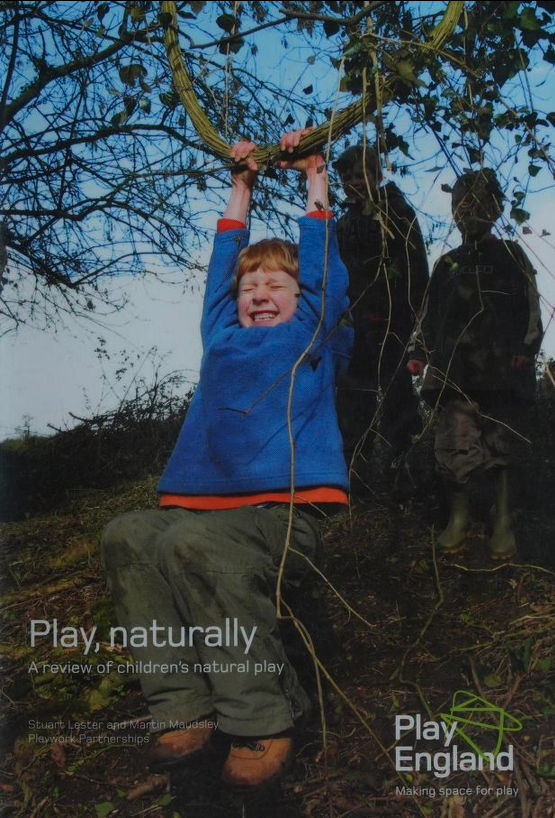Read free. Play, Naturally: a review of children’s natural play, by Stuart Lester, 2007.
Excerpt
What the research in this book clearly indicates is that children want and need access to the same wild spaces—the ‘hills’ and ‘lanes’—that we recall from our childhoods, the local natural spaces that remain seemingly unkempt and messy, that children can claim and use as their own, and that allow them to become immersed in nature in all its forms and manifestations.
Nature is extremely resilient to children’s playful use. Also, we suggest, through playing in natural environments children themselves have the potential to become highly resilient. Playing naturally is not simply contained in a precious sense of caring for the environment, but as a real and immediate experience of playing uninhibitedly among the diversity and potential that such spaces afford. Where there is compatibility between children’s play needs and the opportunities offered by a place, there are likely to be strong affective relationships.
Although natural landscapes and children’s natures remain inherently playful, children’s ‘field of free action’ – their ability to discover and accept nature’s invitations-is shrinking rapidly. It is perhaps this issue that represents the fundamental change over time in children’s relationship to outdoor spaces. Of course, many children may still find spaces to call their own and consequent brief occasions to play freely, but others struggle to reap the benefits from interacting independently with wildness. Research would suggest that a number of significant and interconnected factors are contributing to this situation, which is discussed at some length in this book, particularly the prevailing sense that the outdoors is a place of danger and threat to children.
One of this book’s fundamental messages is the value and importance of nearby nature, for children’s play in particular and for human health and well-being in general. Therefore we need to ensure that our human environments allow the natural habitats of children to survive and thrive. Indeed, the very survival of natural spaces in the future may well depend on providing children with opportunities to play naturally today.
Introductory Pages
Related Posts

Maker Projects for Kids Who Love…

Instead of Education

1,001 Activities for Children

Play According to Hoyle

PlayDHD : permission to play







